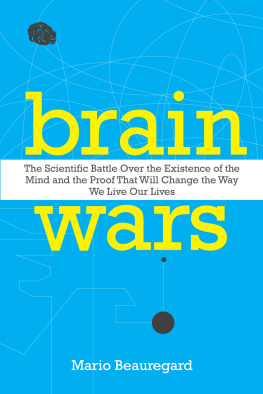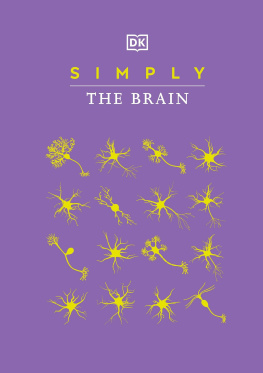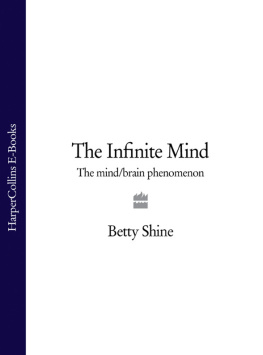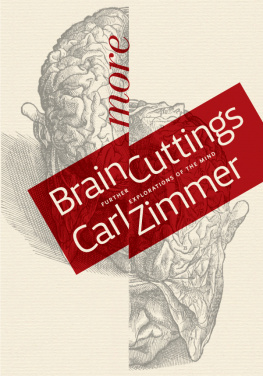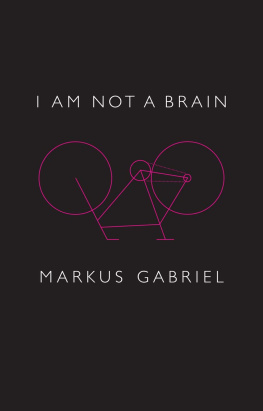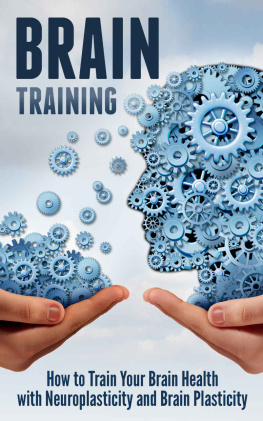BRAIN WARS
The Scientific Battle Over
the Existence of the Mind and the
Proof That Will Change
the Way We Live Our Lives
Mario Beauregard

Contents
Materialism and the Mind-Brain Problem
If... Descartes... had kept a poodle, the history of philosophy would have been different. The poodle would have taught Descartes that contrary to his doctrine, animals are not machines, and hence the human body is not a machine, forever separated from the mind...
ARTHUR KOESTLER
Very often, perhaps more often than you think, ordinary people have unexplained experiences that defy the boundaries and explanations of traditional science:
A group of patients suffering from painful osteoarthritis of the kneesome leaning on canes to walk, and all diagnosed to be in need of knee surgeryparticipate in a double-blind experiment in which some are given real knee surgery, and others are given placebo, or fake, surgery. The results are startling: all of the patients report much less pain, and those who had gotten the placebo surgerythat is, no surgeryare even able to walk and play basketball.
One evening after dinner, while watching the sunset from his living room, a successful physician and award-winning research psychiatrist enters into a mystical state of illumination in which time seems to disappear. He returns to ordinary consciousness a few minutes later, the course of his life changed forever.
Maria, a migrant worker, has a severe heart attack and is admitted to a hospital coronary unit, where medical personnel rush to restart her heart and save her life. Later, she tells a social worker that during her cardiac arrest she looked down on her body from the ceiling and watched the doctors work. And while she was there, she looked out the window and spotted a tennis shoe on the ledge of another building. Curious, the social worker searches for the tennis shoeand finds it, right where Maria said it would bein a spot that Maria could not possibly have seen from her hospital bed.
What happened?
Were the knee patients who received the placebo surgery healed by the power of their belief? Or is arthroscopic surgery simply not all it is cracked up to be?
Did the psychiatrist really experience what Aldous Huxley called mind at large? Did his consciousness fuse with the source of the universe? Or was he simply hallucinating or having a waking dream?
Did Maria leave her body and float to the ceiling? And how could she see a tennis shoe that was hidden from her view?
Is any of this really possible?
The questions we are asking in this book are age-old: Are we nothing but sophisticated animals? Where does our sense of self originate? Is there a difference between our brains and our minds or consciousness? What happens to us after our body perishes? Does our consciousness completely dissolve into nothingness? Can the mind exist without the body?
Over the past several centuries in the West, most scientists have functioned within a strict materialist framework that holds to one essential assumption: matter is all that exists. This materialist viewpoint has become the lens through which most of us interpret the world, interact with it, and judge what is true. Mainstream neuroscientistsscientists like myself, who study the brain and how it worksoperate from the view that electrical impulses in the brain account for all of our thought patterns and mental experiences. In the harsh judgment of the famed molecular biologist Francis Crick, the co-discoverer of the molecular structure of DNA, You, your joys and your sorrows, your memories and your ambitions, your sense of personal identity and free will, are in fact no more than the behavior of a vast assembly of nerve cells and their associated molecules.
Yet... is matter really all that exists? Most of us, regardless of our religious beliefs, feel intuitively that our consciousnessour selves, what makes us unique individualsresides apart from our bodies. Human cultures globally and throughout history have conceived of a vital principle, the seat of mind and self, that survives the death of the body as an individual spirit or as a part of a Universal Spirit. For the past several centuries scientists have had to put their innate beliefs to one side in order to do the fine, objective work that has enabled so many remarkable discoveries. We have gained much through this method, but along the way science seems to have lost sight of a wider view: the open door to the possibility of the impossible.
Within the view of materialism, everything is composed of collections of material particles. All that we experienceincluding our thoughts, feelings, beliefs, intentions, sense of self, and spiritual insightsresults from electrochemical impulses in our brains. In this world, people who report transcendent experiencesfrom out-of-body experiences like Marias, or clairvoyant visions of things we cant possibly know, or ecstatic experiences in which we seem to merge with the universemust by definition be hallucinating or having some sort of momentary brain malfunction.
For me, for a growing number of scientists, and perhaps for you too, this sort of thinking does not resonate with what we feel and experience every day, let alone in moments that transcend the ordinary. In fact, materialisms truncated understanding of what it means to be human often prevents us from seeing what is staring us in the face. Physician and author Dr. Larry Dossey puts his finger on the core issue: Theres [a dreary] little secret that veteran scientists never let kids in onthat if they enter science, they have to check their minds at the door. The reason is that mind, as most people think about it, does not exist in conventional science because the expressions of consciousness, such as choice, will, emotions, and even logic are said to be brain in disguise.
We have been checking our minds at the door for a long time. Yet many of us, whether we describe ourselves as religious or even spiritual, look around at the intricate workings of nature and our own bodies and feel innately that there must be more. Yes, we understand that our brains direct the amazing systems that keep our bodies running; at the same time, we stubbornly continue to believe that wethe intangible stuff that we identify as ourselvesare more than our brains.
The brain can be weighed, measured, scanned, dissected, and studied. The mind that we conceive to be generated by the brain, however, remains a mystery. It has no mass, no volume, and no shape, and it cannot be measured in space and time. Yet it is as real as neurons, neurotransmitters, and synaptic junctions. It is also very powerful.
A wealth of scientific studies indicate that our thoughts, beliefs, and emotions influence what is happening in our brains and bodies and play a key role in our health and well-being. For better or for worse, we create our lives, our health, and our worlds with our minds. You will read about many of these studies in the chapters of this book. Research shows the real and often untapped power of the mind.
Our belief in the efficacy of a bogus treatmenta treatment proved by science not to workcan stimulate our self-healing capacity even in diseases as severe as cancer and Parkinsons disease. Emotions can even affect whether certain genes are turned on or offaltering, for example, our bodies response to stress.
We can deliberately change processes in our bodies that are normally not under voluntary control. We can improve our cognitive performance by learning to control the electrical activity of our brains using neurofeedback. We can train our mindsthrough meditative practicesto enhance the activity of brain areas implicated in emotional well-being, compassion, and attention. And mental training can even change the structure of our brains.
Next page
